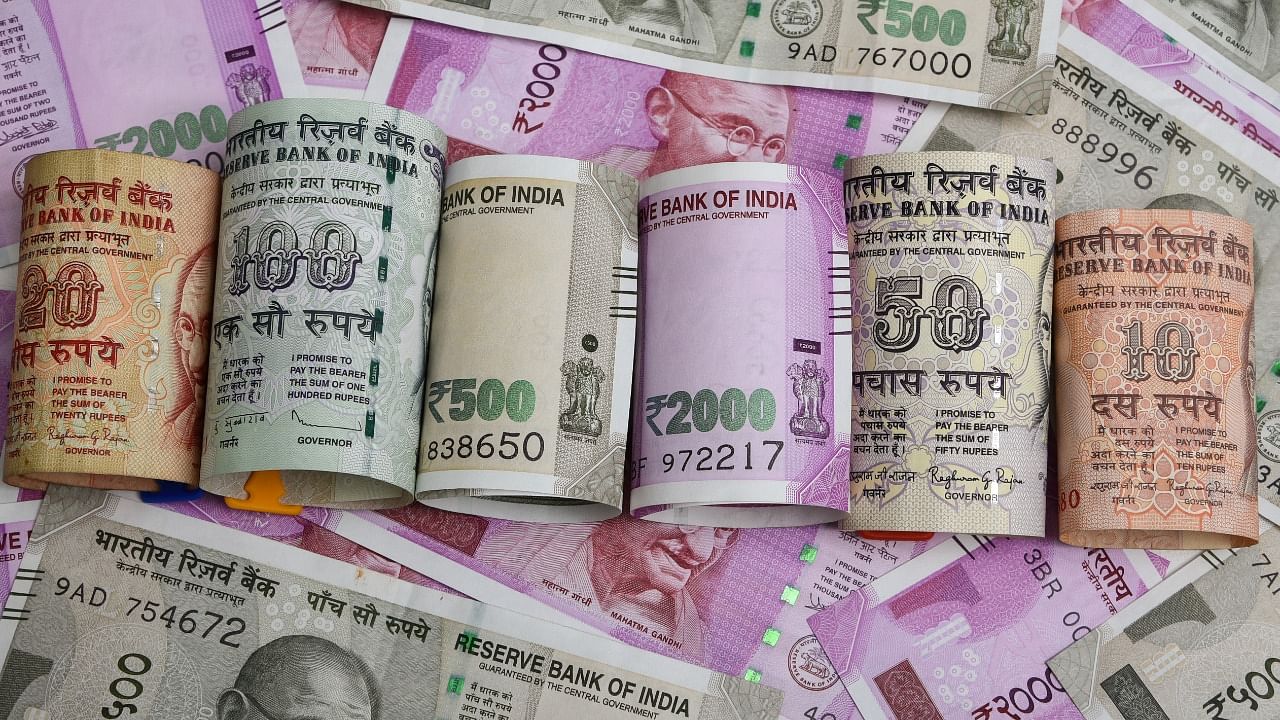
The Indian rupee, which has fallen 7 per cent since the start of the financial year to 81.26 against the dollar on Monday, will depreciate further by the end of March 2023, according to a majority of the analysts and economists polled by DH.
Nine out of the 13 poll participants said they expected the rupee to fall further due to a host of reasons including the strengthening of the greenback, a rise in global commodity prices and inflation in Asia’s third-largest economy. According to the least optimistic estimate, the rupee could breach the 84-mark against the dollar by the end of the financial year.
The US dollar rose against the euro and yen on Monday, as investors kept their focus on the Federal Reserve's interest rate hiking path after a policymaker said too much was being made of last week's cooler US inflation data, Reuters reported.
The US economy has been coping with four-decade high inflation, prompting the Fed to increase the benchmark lending rate periodically, from near zero in March 2022 to 3.75 per cent - 4 per cent in November 2022.
“Amid the ultra-hawkish stance of the US central bank and the rapid pace of interest rate hikes to battle widespread inflationary pressures and concerns about a global economic downturn, we have witnessed safe haven flows into the dollar as a hedge against potential risks,” said Sugandha Sachdeva, vice president for commodity and currency research at Religare Broking.
The dollar index, which tracks the greenback against a basket of major currencies, touched its highest level in two decades this year.
Eight out of the 13 poll participants listed a spike in the prices of global commodities, especially crude oil, as another significant contributing factor.
“The key reason in (the) early part of the year was the spike in oil prices due to (the) Russia-Ukraine war alongside a worsening trade balance” said Dhiraj Nim, who is a foreign exchange strategist at ANZ Research.
India, which is the world’s third-largest oil importer, has seen its current account deficit (CAD) widen on account of high import bills.
“The CAD of India is sharply increasing with (the) latest figure coming at $23.90 billion for the first quarter of fiscal year 2022-23,” adding that it stands at 2.8 per cent of the GDP which is the highest in four years and extremely close to the 3 per cent red line, according to Riya Singh, Senior Research Analyst (currency) at Nirmal Bang Securities.
30 per cent of those polled blamed high inflation at home as one of the key reasons. India's retail inflation eased to a three-month low of 6.77 per cent in October, but was still above the Reserve Bank of India’s tolerance range of 2 - 6 per cent.
"RBI has been less hawkish than other major central banks but concern over higher inflation continues to disturb the overall market sentiment," said Gaurang Somaiya, a forex and bullion analyst at Motilal Oswal Financial Services.
A further rise in crude oil prices on the back of escalating geopolitical conflicts appeared to be the overriding concern, moving forward.
"If oil prices inch up above $100-$120/barrel, it will put pressure on India’s already precarious external position and hence will be detrimental for the rupee," said Aditi Gupta, an economist at the Bank of Baroda.
The next big trigger for the rupee will be the meetings of the US and Indian central banks in December, the analysts told DH.